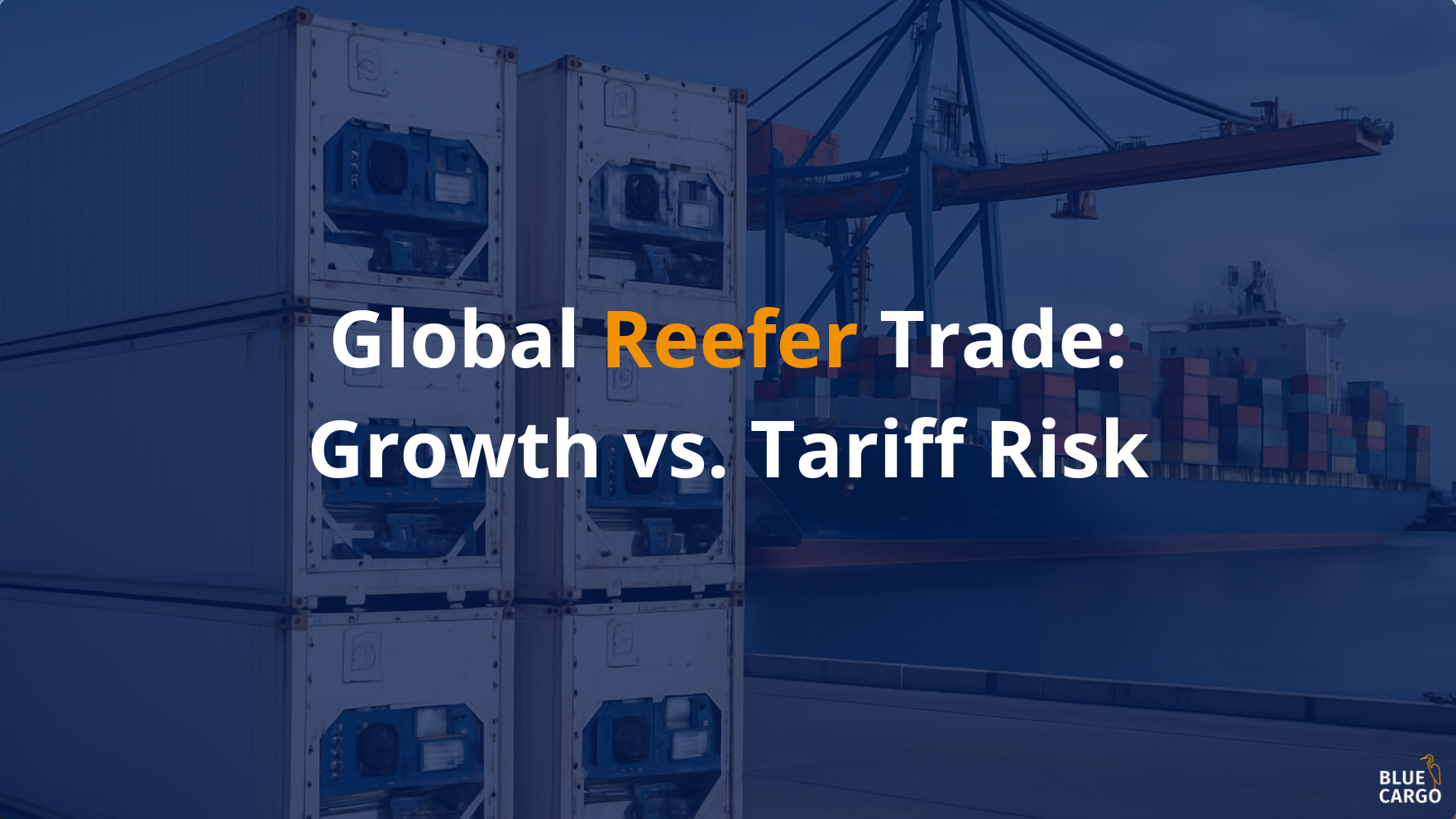
Reefer Trade Outlook 2025–2029: Growth, Tariffs, and Global Risks
August 20, 2025
This morning, our team attended the JOC Cold Chain webcast on tariffs, congestion, and refrigerated shipping. The discussion reinforced what many in the industry are feeling: reefer shipping is enjoying a burst of growth, but the long-term picture is more uncertain. The question isn’t just how much demand will grow, but how tariffs and congestion will reshape the flow of refrigerated cargo over the next five years.
📍 We’ll be continuing this discussion at JOC Inland in Chicago, where Pedro, Tyler, Alex, and Laura will be on site.
2025: A Strong but Fragile Start
Reefer trade has kicked off 2025 with strong momentum:
- Global reefer volumes rose 9.3% between January and April, led by Southern Hemisphere exports (JOC Cold Chain).
- U.S. imports climbed 10%, keeping America the world’s largest — and most tariff-sensitive — market.
- Nearly 95,000 new reefer containers entered the fleet in Q1, a 145% YoY increase. Even so, scarcity persisted as congestion and rerouting stretched transit times (JOC Cold Chain).
📊 “The U.S. handled 1.42M reefer TEUs in 2024, making tariff shifts especially consequential” (JOC Webcast).
Tariffs as the Wild Card
Tariffs remain the most unpredictable factor in the reefer equation.
- U.S. measures on Mexico and Canada could sharply disrupt imports of avocados, frozen vegetables, and other perishables.
- Replacing those suppliers won’t be easy — a shift likely to drive higher food prices or dampen demand.
- Globally, tariff cycles now weigh as heavily on sourcing decisions as natural demand itself.
2026–2029: Moderate Growth, Persistent Risk
Looking ahead, reefer trade is expected to grow at just 1.5–2% CAGR, a cooling pace after the early-2025 surge. Risks shaping the outlook include:
- Weather volatility, crop disease, and animal health shocks.
- Reefer fleet over-investment, which could create overcapacity by 2027.
- Persistent congestion and blank sailings.
But inflation could hit harder: imports may decline by 3–5% in 2026 if tariffs continue to push up costs. There are opportunities, too; Leveraging Peru as a routing hub for China-origin shipments could help soften the downturn.
For shippers, the key is how data is used. Monitoring SSLs data and carrier updates can provide early warning signals to adjust operations. Long-term, that same data is vital for emissions reporting and compliance strategies. Without a plan, companies risk falling behind in both cost control and sustainability.
📊 “Global refrigerated trade growth may be front-loaded in 2025, but the long-term trajectory looks flatter, signaling potential over-capacity risk” (JOC Cold Chain Webcast).
Regional Shifts in Reefer Trade
China: Increasing self-sufficiency in protein, reducing import growth.
United States: Largest importer and most exposed to tariff cycles.
Southern Hemisphere producers: Brazil, South Africa, Chile anchoring supply growth into the late 2020s.
Strategic Implications for Shippers and Importers
> Lock in reefer capacity contracts now to buffer against volatility.
> Build tariff scenarios into procurement planning to guard against price shocks.
> Use carrier and SSLs data for both short-term disruption management and long-term emissions compliance.
📍 Not heading to JOC Inland? You can also meet us at CHAINge North America, where Shane and Kawas will share strategies for tariff readiness and cold chain resilience.
----
Reefer shipping is at a crossroads: short-term growth, long-term moderation, and constant tariff-driven uncertainty.
The winners in this environment will be the companies that integrate capacity security, tariff foresight, and emissions readiness into one strategy.
Let’s continue the discussion:
📍 Meet Pedro, Tyler, Alex, and Laura at TPM Inland in Chicago.
📍 Or connect with Shane and Kawas at CHAINge North America.
⫘⫘⫘⫘⫘⫘⫘⫘⫘⫘⫘⫘⫘⫘⫘⫘⫘⫘⫘⫘⫘⫘⫘⫘


